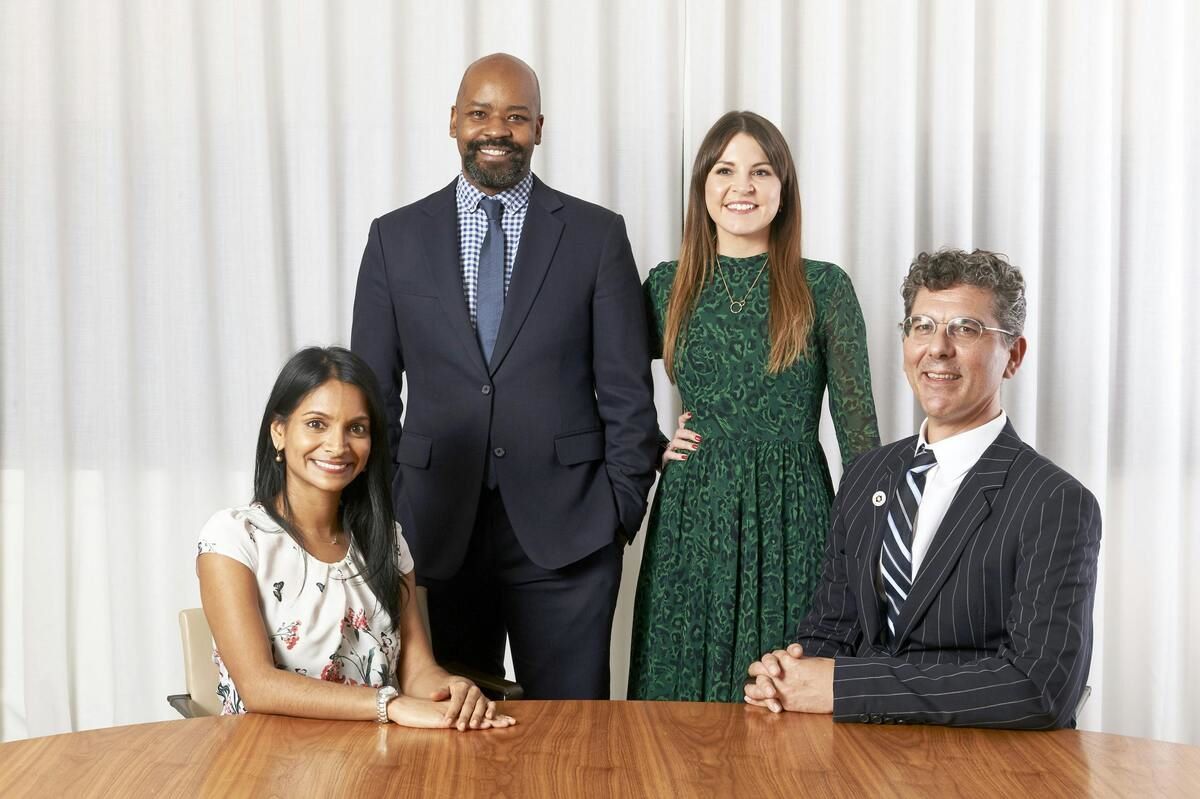
Who are the Central Park Five? The Central Park Five refers to five African American and Latino teenagers—Antron McCray, Kevin Richardson, Yusef Salaam, Raymond Santana, and Korey Wise—who were wrongfully convicted of raping a jogger in Central Park in 1989. Their case became a symbol of racial injustice and police misconduct. Despite coerced confessions and a lack of physical evidence, they were convicted and served years in prison before being exonerated in 2002. The real perpetrator, Matias Reyes, confessed, and DNA evidence confirmed his guilt. This tragic story highlights systemic flaws in the justice system and the devastating impact of wrongful convictions.
The Incident
The Central Park Five case began with a brutal attack that shocked New York City and the nation. Here are the key details:
- On April 19, 1989, a 28-year-old investment banker named Trisha Meili was jogging through Central Park in New York City. She was brutally attacked and raped, and her body was found in a wooded area of the park. The crime sent shockwaves through the city, leading to a massive manhunt and widespread fear among New Yorkers.
The Arrests
In the days following the attack, police arrested five teenagers. Their arrests and the methods used to obtain confessions have been heavily scrutinized.
-
Over the next few days, five teenagers were arrested and charged with the crime: Antron McCray, Kevin Richardson, Yusef Salaam, Raymond Santana, and Korey Wise. The arrests were based on confessions obtained from the teenagers during police interrogations, which were later disputed as coerced.
-
The confessions were obtained through a combination of psychological manipulation and physical coercion. The police used tactics such as sleep deprivation, physical intimidation, and false promises to extract the confessions. These methods have been widely criticized as unethical and unconstitutional.
Trial and Conviction
Despite the questionable nature of the confessions, the trial proceeded, leading to the conviction of the five teenagers.
-
The trial of the Central Park Five began in 1989. Despite the questionable nature of the confessions, the prosecution presented the confessions as evidence, and the defense was unable to effectively challenge them. On December 19, 1989, the five teenagers were found guilty of rape and other charges. Each of them received a sentence ranging from 5 to 15 years in prison.
-
Antron McCray was sentenced to 10 years in prison, Kevin Richardson to 5 years, Yusef Salaam to 5 years, Raymond Santana to 5 years, and Korey Wise to 15 years. The sentences were seen as harsh by many, given the age and inexperience of the defendants.
Exoneration and New Evidence
Years later, new evidence emerged that would change the course of the case.
-
In 2002, the DNA evidence from the crime scene was re-examined. The results showed that the DNA did not match any of the Central Park Five. This new evidence led to a re-examination of the case, and in 2002, the convictions were vacated. The charges were formally dropped in 2002.
-
In 2002, Matias Reyes, a serial rapist and murderer, confessed to the crime. Reyes had been in prison since 1988 for a separate crime and had access to the same DNA evidence that had exonerated the Central Park Five. His confession revealed that he had acted alone in the attack on Trisha Meili.
Reparations and Media Coverage
The exoneration led to reparations and extensive media coverage, shedding light on the injustices faced by the Central Park Five.
-
In 2014, the City of New York agreed to pay $41 million in reparations to the Central Park Five. This settlement included compensation for the time they spent in prison, as well as for the emotional and psychological trauma they endured.
-
The Central Park Five case has been extensively covered in media, including a 2012 documentary film titled "The Central Park Five," directed by Ken Burns, David McMahon, and Sarah Burns. The documentary explores the case in detail, highlighting the racial and social injustices that led to the wrongful convictions.
Social and Legal Implications
The case has had far-reaching implications for the justice system and society as a whole.
-
The Central Park Five case highlights several broader social and legal issues. It underscores the dangers of coercive police tactics and the importance of ensuring that confessions are obtained voluntarily. It also highlights racial bias in the justice system, as the five defendants were African American and Latino in a predominantly white community.
-
The experience had a profound impact on the defendants. Antron McCray struggled with addiction and depression. Kevin Richardson became an advocate for justice reform. Yusef Salaam continued his education and became a community leader. Raymond Santana struggled with addiction but later became an advocate for justice reform. Korey Wise spent 13 years in solitary confinement and was released in 2002.
Public Reaction and Judicial Failures
Public reaction and judicial failures played significant roles in the case's development and outcome.
-
The case sparked widespread outrage and debate about racial profiling and police misconduct. Many argued that the convictions were a result of racial bias and that the confessions were coerced. The case also raised questions about the reliability of eyewitness testimony and the use of DNA evidence in criminal trials.
-
The case highlighted prosecutorial misconduct, particularly the use of coercive interrogation techniques. The police tactics used to obtain the confessions have been widely criticized as unethical and unconstitutional.
-
The judicial system failed the Central Park Five in several ways. The trial was marred by procedural errors, and the defense was inadequately prepared. The judges and prosecutors involved in the case have faced criticism for their handling of the case.
Media and Civil Rights Activism
Media coverage and civil rights activism were crucial in bringing attention to the injustices faced by the Central Park Five.
-
Media coverage played a significant role in shaping public opinion. The initial coverage focused on the heinous nature of the crime and the perceived guilt of the five teenagers. However, as more information came to light, public opinion began to shift, and many began to question the fairness of the trial.
-
The Central Park Five case galvanized civil rights activism. It highlighted the need for greater accountability in law enforcement and the importance of protecting the rights of the accused. Activists argued that the case was emblematic of systemic racism within the justice system.
Policy Reforms and DNA Evidence
The case has led to calls for policy reforms and highlighted the importance of DNA evidence in criminal investigations.
-
In response to the case, there have been calls for policy reforms aimed at preventing similar injustices. These reforms include stricter guidelines for police interrogations, increased oversight of prosecutorial conduct, and greater protections for the rights of the accused.
-
The use of DNA evidence in the case highlights its importance in criminal investigations. However, it also underscores the need for careful handling and interpretation of such evidence to avoid miscarriages of justice.
Psychological and Community Impact
The psychological impact on the defendants and the community response were significant aspects of the case.
-
The experience had a profound psychological impact on the defendants. Many struggled with depression, anxiety, and addiction. The trauma they endured has been well-documented in various accounts and documentaries.
-
The community responded to the case with a mix of emotions. Some were outraged by the perceived injustice, while others were fearful of the crime. The case led to increased community policing initiatives aimed at building trust between law enforcement and minority communities.
Educational and Advocacy Efforts
The case has been used as a teaching tool and has inspired advocacy efforts for justice reform.
-
The Central Park Five case has been used as a teaching tool in educational settings. It serves as a case study in ethics, law, and social justice, highlighting the importance of critical thinking and the need for vigilance in ensuring justice is served.
-
The Central Park Five case has left a lasting legacy in American society. It serves as a reminder of the importance of protecting individual rights and ensuring that justice is fair and unbiased. The case has inspired numerous books, films, and advocacy efforts aimed at reforming the justice system.
-
The reparations awarded to the Central Park Five are seen as a step towards healing and justice. However, many argue that true healing can only come with full acknowledgment of the wrongs committed and meaningful reforms to prevent such injustices in the future.
-
The case underscores racial bias within the justice system. The disproportionate impact of wrongful convictions on minority communities highlights systemic issues that need to be addressed through policy reforms and increased accountability.
-
The media played a significant role in shaping public opinion during the case. However, it also highlights the responsibility of the media to report accurately and critically, avoiding sensationalism that can perpetuate injustice.
Legal Reforms and Community Trust
Legal reforms and efforts to build community trust have been important outcomes of the case.
-
Legal reforms have been proposed to prevent similar injustices. These include stricter guidelines for police interrogations, increased oversight of prosecutorial conduct, and greater protections for the rights of the accused.
-
The case has led to increased efforts to build trust between law enforcement and minority communities. Community policing initiatives aim to foster greater cooperation and understanding between police and the communities they serve.
Educational Initiatives and Advocacy Efforts
Educational initiatives and advocacy efforts continue to promote justice and human rights.
-
Educational initiatives have been launched to teach students about the case and its implications. These initiatives aim to promote critical thinking and awareness about justice and human rights.
-
Advocacy efforts continue to push for justice reform. Organizations dedicated to protecting individual rights and ensuring fairness in the justice system have been instrumental in advocating for policy changes and greater accountability.
-
The Central Park Five case is a significant chapter in American history, highlighting systemic injustices and the need for continuous reform. It serves as a reminder of the importance of protecting individual rights and ensuring that justice is fair and unbiased. The case continues to inspire advocacy efforts and educational initiatives aimed at promoting justice and human rights.
The Lasting Impact of the Central Park Five Case
The Central Park Five case stands as a stark reminder of the flaws in the justice system. It highlights the dangers of coercive police tactics, racial bias, and the importance of DNA evidence in ensuring justice. The wrongful convictions of Antron McCray, Kevin Richardson, Yusef Salaam, Raymond Santana, and Korey Wise led to years of suffering but also sparked significant civil rights activism and calls for legal reforms.
Their exoneration in 2002 and the subsequent $41 million settlement in 2014 underscore the need for accountability and change. This case has become a powerful teaching tool, inspiring documentaries, books, and advocacy efforts aimed at justice reform. The legacy of the Central Park Five continues to influence discussions on racial equality, media responsibility, and the protection of individual rights. It serves as a crucial lesson in the ongoing fight for a fair and unbiased justice system.
Was this page helpful?
Our commitment to delivering trustworthy and engaging content is at the heart of what we do. Each fact on our site is contributed by real users like you, bringing a wealth of diverse insights and information. To ensure the highest standards of accuracy and reliability, our dedicated editors meticulously review each submission. This process guarantees that the facts we share are not only fascinating but also credible. Trust in our commitment to quality and authenticity as you explore and learn with us.


